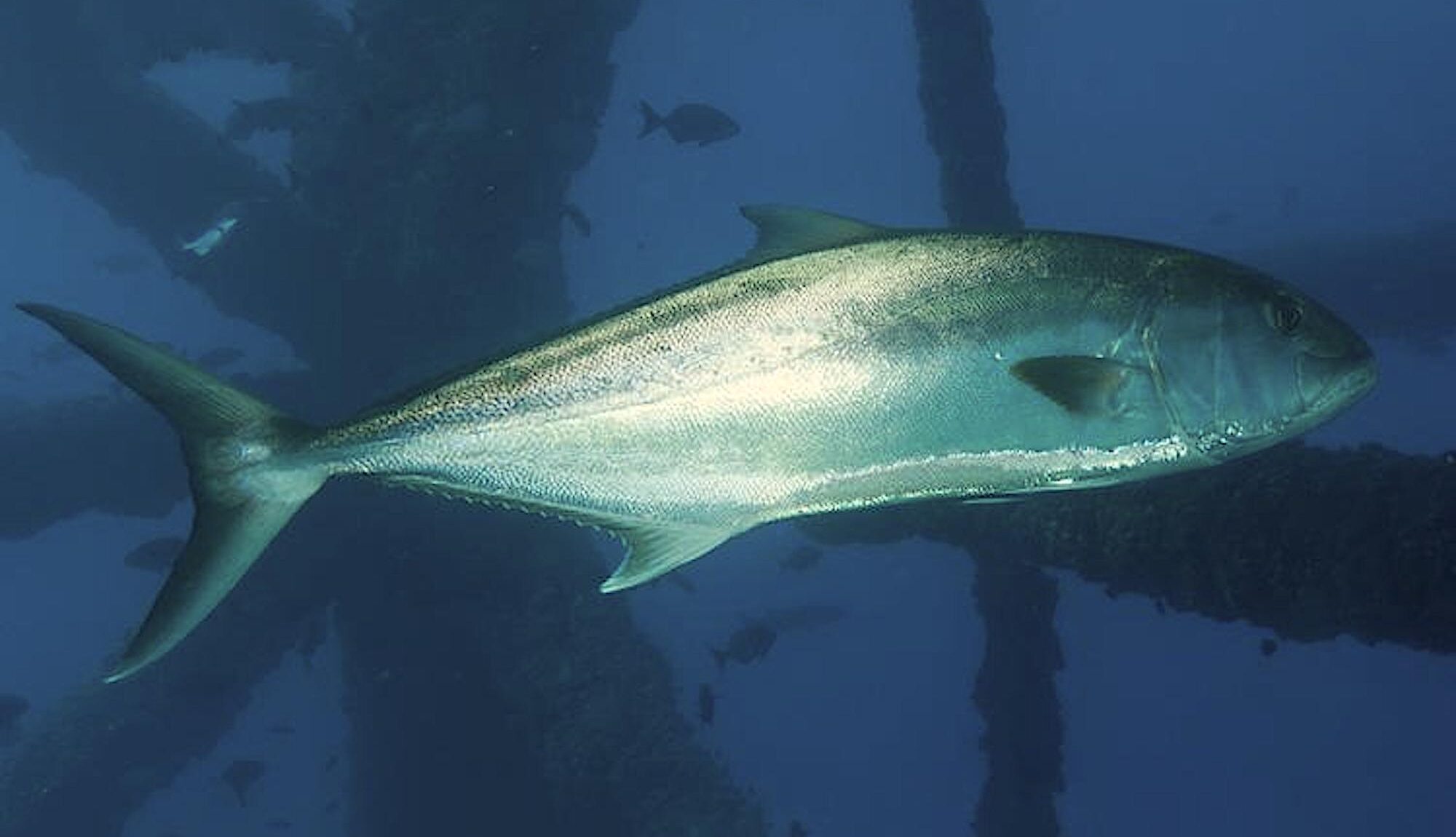Can We Use Video to Estimate the Numbers of Amberjack?

With underwater cameras trained on various amberjack species in the Southeast, scientists tried to gauge population trends for the fish.
Scientists continue to gather data to estimate the population size of greater amberjack, and anglers can still report tag returns from the 2022 “Greater Amberjack Count.”
Some greater amberjack were fitted with acoustic tags, electronic transmitters surgically implanted inside the fish. Many more greater amberjack have conventional tags, which are simple, plastic-coated objects that are applied externally and resemble colorful streamers.
Each tagged greater amberjack, regardless if it has one or two tags, carries a reward of $250. The physical tag(s) must be mailed in to claim the reward, so fishermen should clip off and save the tag(s), even if they plan to release the fish.
You can find information about how to report a tag-return here.
Research Need
There are four amberjack species found off the North Carolina coast, including greater amberjack, a species that is highly sought after by fishers in the state. Yet, amberjacks are difficult for scientists to sample accurately, because they swim fast, come together in mixed-species schools, are difficult to distinguish from one another, and are very curious.
But providing reliable estimates of the numbers of amberjacks is critical for management decisions that affects their sustainability.
What did they study?
Using baited fish traps each summer since 1990, scientists have surveyed reef-associated fish species, including amberjacks, between North Carolina and the east coast of Florida – but amberjacks rarely entered the traps.
Since 2011, scientists have attached video cameras to traps to try to estimate the populations of those species, like amberjacks, that traps don’t catch well.
A research team with the National Marine Fisheries Service recently analyzed these underwater videos to determine population trends of amberjacks, which species of amberjacks were most and least abundant, and where each species frequented.
What did they find?
While the observed numbers of greater amberjack have remained relatively stable over the last decade, the observed almaco jack population has increased substantially (about 450%). In fact, by 2019, almaco jacks were on video about twice as often as greater amberjacks (about 40% of the videos, compared to 20%). Less common were banded rudderfish (visible on fewer than 5% of the videos) and, especially, lesser amberjacks (visible on fewer than 1% of the videos).
Greater amberjacks were fairly widespread across the continental shelf, occurring commonly at depths of about 50 feet to over 325 feet. Cameras recorded almaco jacks and, especially, lesser amberjacks in slightly deeper waters than greater amberjacks, while banded rudderfish mostly stuck to water that was less than 165 feet deep.
All four amberjack species were visible by camera widely across the study area around reef habitats, showing no obvious regional preferences.
Anything else?
Video showed that banded rudderfish grouped together the most heavily; in fact, one video frame contained 150 banded rudderfish. On the other hand, lesser amberjacks were the least aggregating species. Video also showed greater amberjack and almaco jack often schooling together.
So what?
Underwater video has become a widely used method to survey fish species around the world, and these researchers showed that it worked very well for sampling amberjacks in North Carolina. Today, managers are using information from these underwater cameras to make decisions that foster the sustainability of these important species.
Reading
Bacheler, N.M., Gregalis, K.C., Gillum, Z.D., Pickett, E.P., Schobernd, C.M., Schobernd, Z.H., and Teer, B.Z. 2022. Using stationary video data to infer relative abundance and distribution of four Seriola species along the southeast United States Atlantic coast. Fisheries Research 249: 106238. https://doi.org/10.1016/j.fishres.2022.106238
Field work was carried out by the Southeast Fishery-Independent Survey and the South Carolina Department of Natural Resources, and funding was provided by the National Marine Fisheries Service.
By Nathan Bacheler.
Lead photo: greater amberjack. Credit: NOAA.
The text from Hook, Line & Science is available to reprint and republish at no cost, but only in its entirety and with this attribution: Hook, Line & Science, courtesy of Scott Baker and Sara Mirabilio, North Carolina Sea Grant.

- Categories:



